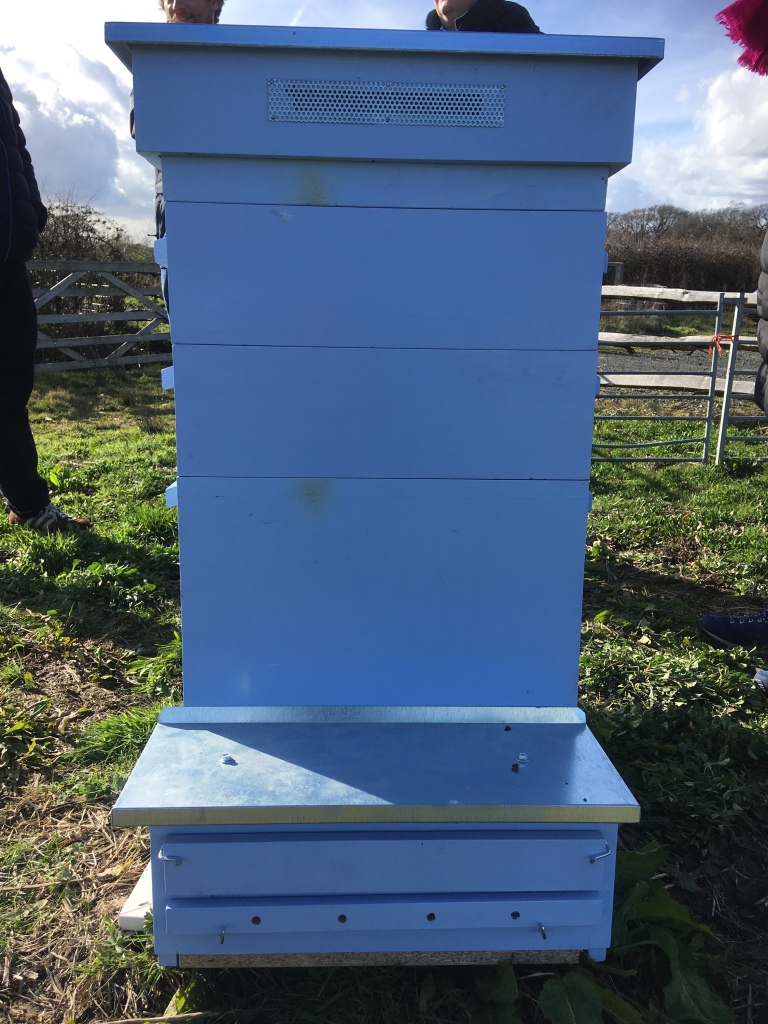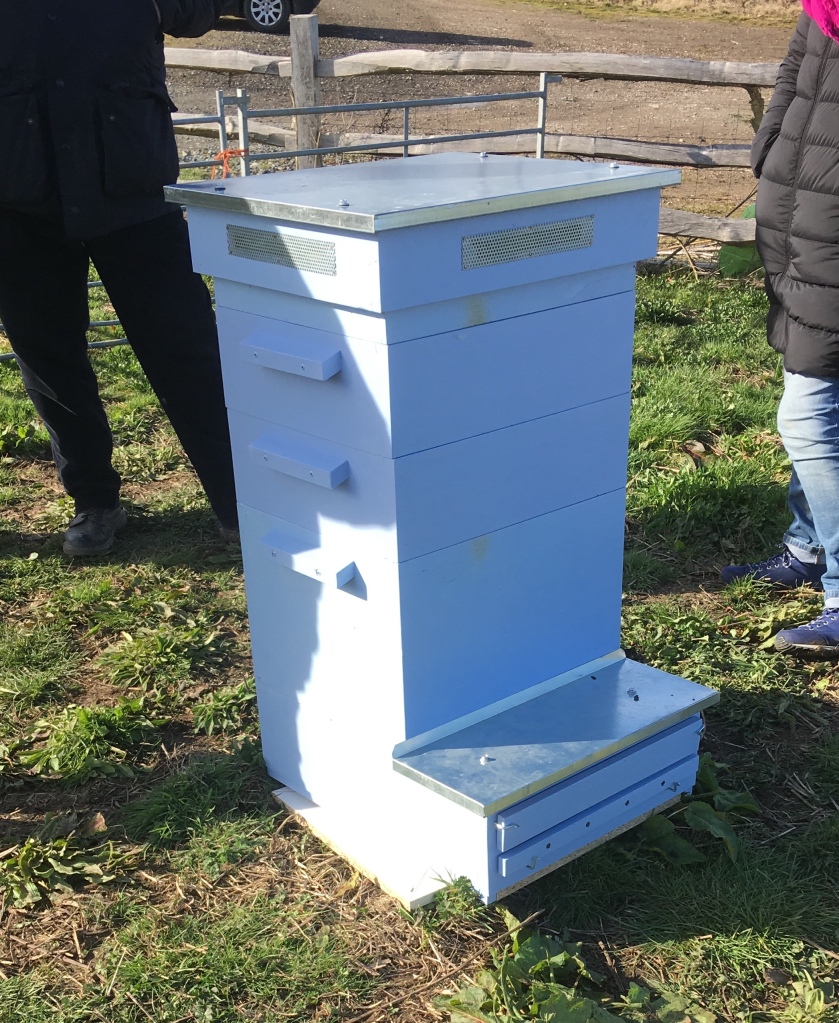I was invited to be involved with this project at a solar farm near me, using a newly developed type of hive to help in the fight against varroa, a parasitic mite which can debilitate honeybee colonies and cause secondary viral infections. Currently the treatments available are chemically-based and have a harsh effect on the bees themselves, so much so that many beekeepers are choosing not to treat so that bees can learn to cope with the mites in their own ways, or by encouraging hygienic behaviour with selective breeding.
It was a blustery day at Berwick, and Ollie and Sarah of Cuckmere Community Solar gave us an overview of the site, and the story of the solar farm thus far. Naturesave and its charitable wing, The Naturesave Trust, are interested in promoting the solar hives on solar farms – the photon action for both makes it an obvious choice – and Berwick is one of the few sites in the UK chosen to host these innovative hives. The installation and ongoing management is overseen by Oxfordshire beekeeper and Thermosolar advocate, Tom Worsley, with beekeepers like me doing the day-to-day maintenance, helped by the local community group.


This hive uses solar energy to warm the brood to a sufficiently high temperature for a short amount of time to kill the mites, but without harming the bees, killing the brood or spoiling the stores of honey and pollen. This ‘thermotherapy’ is done twice a year in spring and autumn, and it will even kill the mites inside the cells which the current treatments available cannot do, so I was really interested to understand how the hive operates. I don’t use chemical preparations on my bees as I rely on a break in the brood cycle from swarming, but this can be a problem some years, and smaller colonies can succumb to varroa-induced issues so I am looking forward to seeing how the hive works this coming season. Tom gave us a tour of his demonstration hive and showed us the simple process of varroa treatment:
As well as having really thick walls (making it far more insulated than a regular National), there are lots of other features of the hive which make it easy to use, such as integral feeding stations for honey or water, optional entrances in the supers, plenty of room under the floor to deter swarming as the bees don’t feel cramped, yet the hive is compatible with a 14×12 BS National frames and regular supers. I don’t use foundation with my bees, so I will put wooden dowels across to give support to these large and long combs without needing wire. I will populate it with a swarm as we want to promote local bees, and the surrounding area is loaded with Leucanthemum and Achillea – both great bee plants – but we will use the hives to encourage the local community to plant more flowering plants, reduce pesticide and herbicide use in their gardens, and to not mow their clover or grub out their dandelions, as these are both excellent for pollinators. The hedges planted at the start of the project are coming in to bud, and the bright yellow willow catkins were in evidence.
There will be a honey crop to be had once the bees are established, and this can be used to increase the reach of both the hives and the solar farm, and provide a link between bees and community. With talks, events at the Community area where the bees will be sited, planting sessions and school visits, we hope that the bees will provide a focus for wider environmental connection and awareness of alternative energy projects for Berwick and beyond.








Interesting post, thanks. What does the beekeeper have to do to begin the thermotherapy?
Hi Emily, thank you! Forgive me: I have only had a rough intro to the process as we don’t have the hives yet but basically there is a special solar roof which sits on top of the brood box and increases the temperature. Once it hits the correct temp (I think 45 degrees C but don’t quote me!) you put the regular lid back on and it stews for an hour or so. You then take off the solar lid and put the hive back together. The bees aren’t shut in at all and it’s only a few degrees above the normal nest temp, and only for a short period, but it’s enough to kill all the mites who *can’t* cope with the increased heat. I will be putting up a lot more info once the bees are in and we have the hive to play with properly…
Thanks Jen! Sounds nice and simple.
Yes, I look forward to seeing how it works in the field 🙂